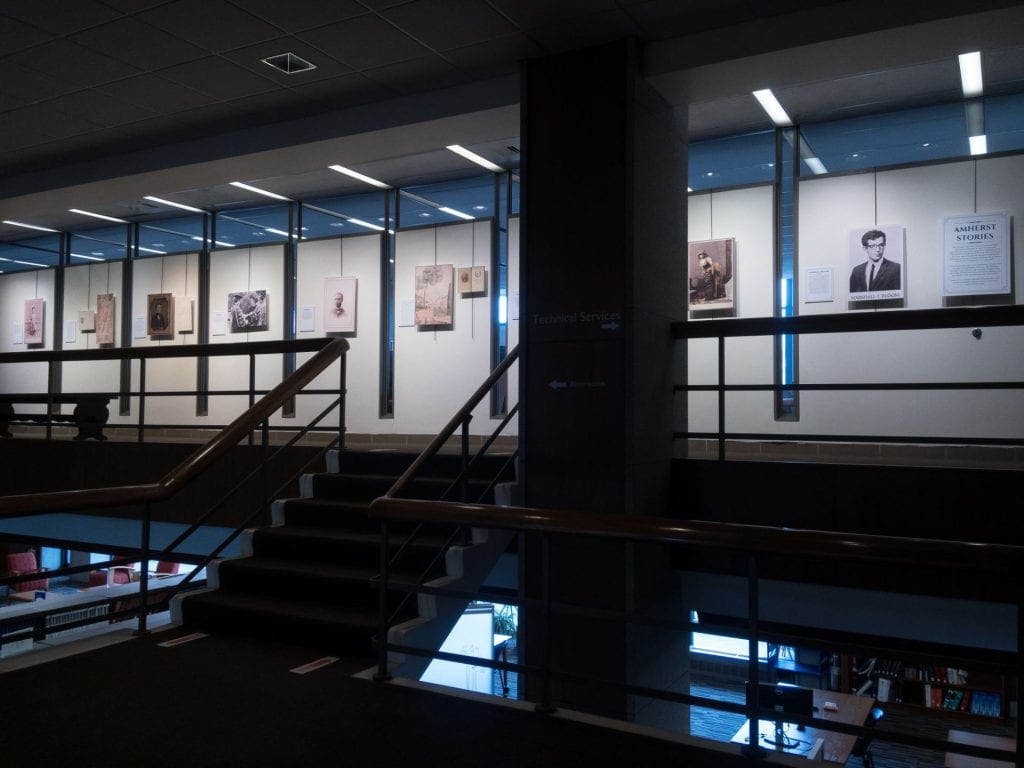 Posters line the mezzanine in Frost Library, featuring a handful of portraits of members of the Amherst College community from the two hundred year history of the institution. While the library is still restricted to current students, faculty, and staff, we wanted to create a virtual exhibit of the portraits featured on campus for all of us who can’t be there in person.
Posters line the mezzanine in Frost Library, featuring a handful of portraits of members of the Amherst College community from the two hundred year history of the institution. While the library is still restricted to current students, faculty, and staff, we wanted to create a virtual exhibit of the portraits featured on campus for all of us who can’t be there in person.
One advantage of the digital medium is that we can provide links to many of the portraits in our digital collections, and we can easily provide citations for these items from the college archives. The poster exhibit necessarily is limited to a small number of portraits that by no means captures the full extent of stories that make up Amherst’s history. Explore ACDC, the college’s Bicentennial webpage, as well as the college archives to see a fuller picture. Amherst stories continue to grow, change, and expand, and we are glad to be a part of this legacy!
Amherst Stories
This display highlights stories of the Amherst community brought to light through the digitization of archival material in preparation for the Amherst College bicentennial. The individuals featured demonstrate the range of experiences fostered within the College and how the Amherst community evolved over our 200 years.
Collections featured in this exhibition include: the College Photographer’s Records, the Amherst College Class Albums, the Amherst College Olios, the Edward and Orra White Hitchcock Papers, and the Henry J. Van Lennep Sketches and Papers.
Many of the images featured here can be found online in Amherst College Digital Collections: acdc.amherst.edu
Clyde Fitch

Clyde Fitch, one of the most popular dramatists of his day, was a member of the class of 1886. Fitch was a major force in student theatricals – both on and off the stage – during his time at Amherst. He was known for his great s kill in playing female roles (common for Amherst’s all-male theater scene) as well as for costuming other performers and decorating stage sets. After graduating, Fitch moved to New York City where he struggled to build a literary career. Travelling to Europe and London, he met Oscar Wilde and fully embraced the aestheticism of Wilde’s social circle. Returning home to New York City, Fitch produced an instant hit with “Beau Brummell.” Fitch wrote thirty-three original plays, twenty-three adaptations, along with a novel and a book of stories for children. At one point, five of his plays were running on Broadway simultaneously. Although his works are nearly forgotten today, Clyde Fitch was both a major influence on the shape of American theater and a noted celebrity until his death in 1909.
Explore in the archives | Learn more about Clyde Fitch
Wilbert Lew
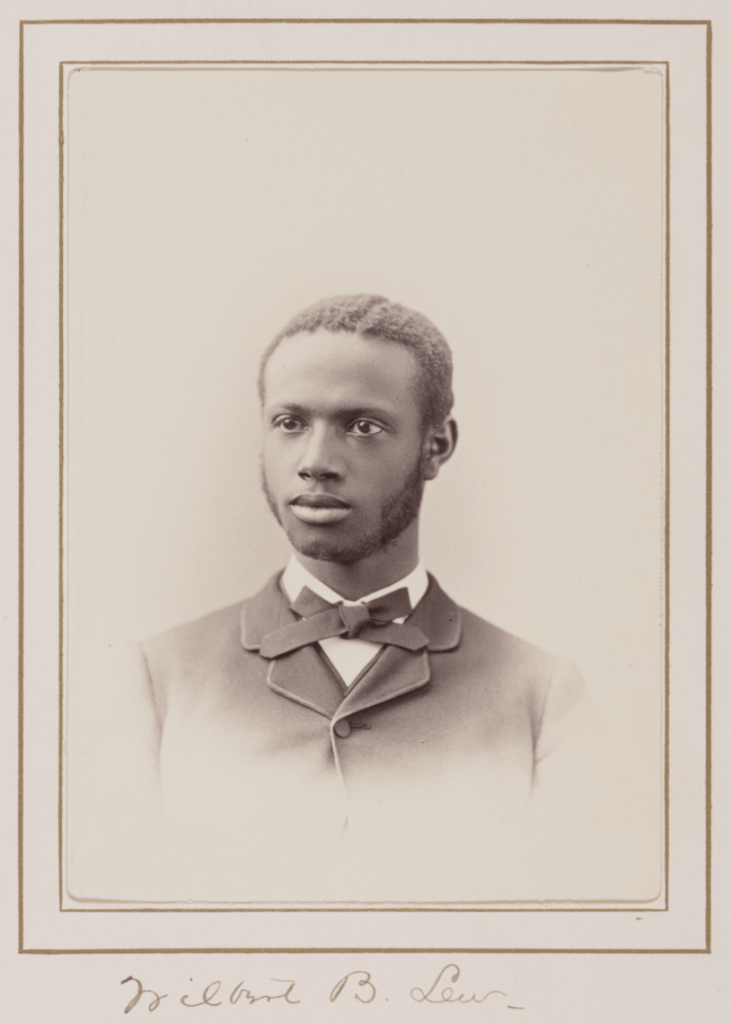
Wilbert Lew was born in Gardner, Massachusetts on May 6, 1861; he attended Gardner High School before coming to Amherst. He graduated with the class of 1883 and studied veterinary medicine in Battle Creek, Michigan, at a time when veterinary medicine was a fledgling science. He studied with Dennis Magner, a leader in the new field. After a brief time with the J. N. Leonard silk factory in Florence, Massachusetts (1888-89), he established himself as a veterinary surgeon there from 1889. He died in Amherst in September 1923.
Learn about the Class Albums collection | Learn more about Wilbert Lew
Marshall Bloom

Marshall Bloom was a member of the class of 1966. Majoring in American Studies, Bloom was involved in numerous campus activities, among them FORUM (the student lecture committee) and The Amherst Student. Under Bloom’s leadership, the newspaper dramatically increased its coverage of national issues. He participated fully in the civil rights movement that was sweeping across college campuses during that time, and he soon became a major force in the development of the alternative press in the United States. One of Bloom’s great accomplishments was founding the Liberation News Service. An alternative to established news services such as AP and CPS, the LNS delivered feature stories and news to the “underground” press, student press, radio stations and independent weekly newspapers and magazines such as the Black Panther, Out, and Akwesasne Notes.
See Marshall Bloom in the 1966 Olio | View more Amherst College Olios online
Henry John Van Lennep
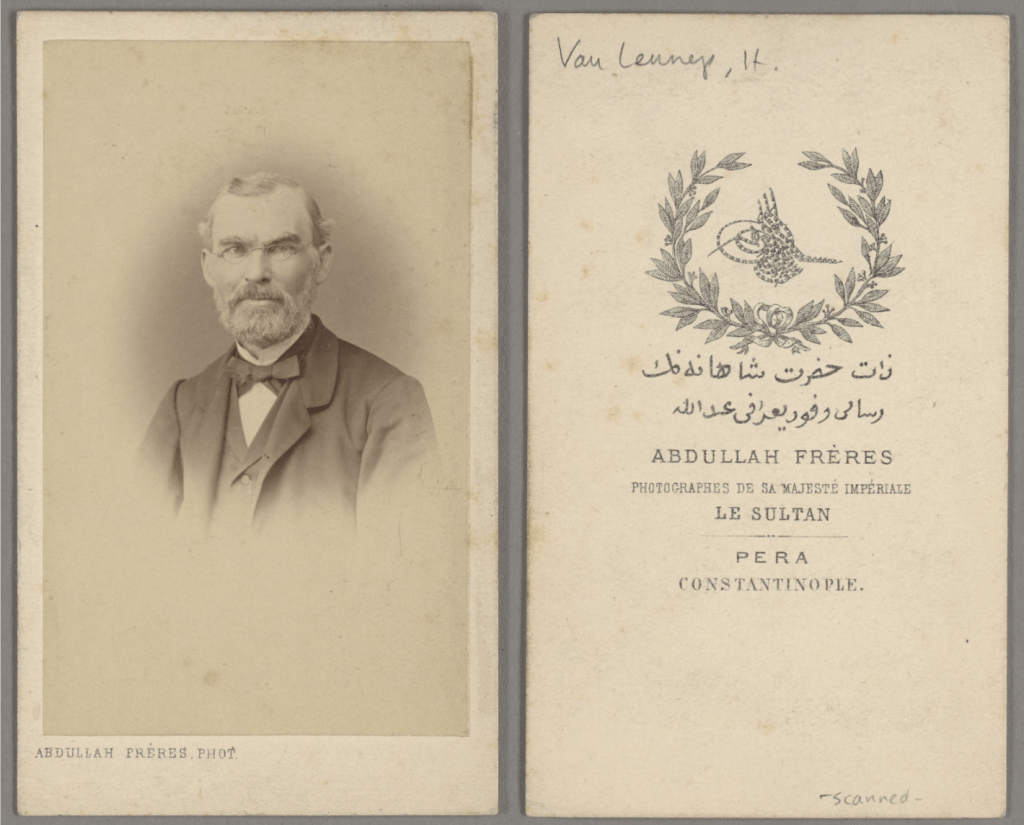
Henry John Van Lennep (AC 1837), a noted 19th-century Christian minister, missionary, writer and educator, was born in Smyrna (present-day Izmir, Turkey) in 1815. In 1830 he was sent to the United States for his education. After graduating from Amherst College in 1837, he was ordained a Congregational minister in 1839. He served as a missionary with the American Board of Commissioners for Foreign Missions for twenty-nine years beginning in 1840, in Smyrna (1840-44 and 1863-69), Constantinople (1844-54), and Tocat (1854-56). Van Lennep traveled extensively throughout the region of western Asia and Egypt. After losing his sight from cataract in 1869, he returned to the United States.

Van Lennep was proficient in numerous languages and was also a skillful artist, sketching (in pencil or pen and ink) scenes from his extensive travels. Many of his drawings appeared in published works, which include The Oriental Album:Twenty Illustrations, in Oil Colors, of the People and Scenery of Turkey, with an Explanatory and Descriptive Text (1862); Travels in Little-known Parts of Asia Minor: with Illustrations of Biblical Literature and Researches in Archaeology (1870); and Bible Lands: their Modern Customs and Manners Illustrative of Scripture (1875). He also executed several drawings for Professor Edward Hitchcock, including his Geology of Massachusetts (1841) and Illustrations of Surface Geology (1860).
View the Van Lennep collection online | Learn about digitizing the Van Lennep collection
George Gould
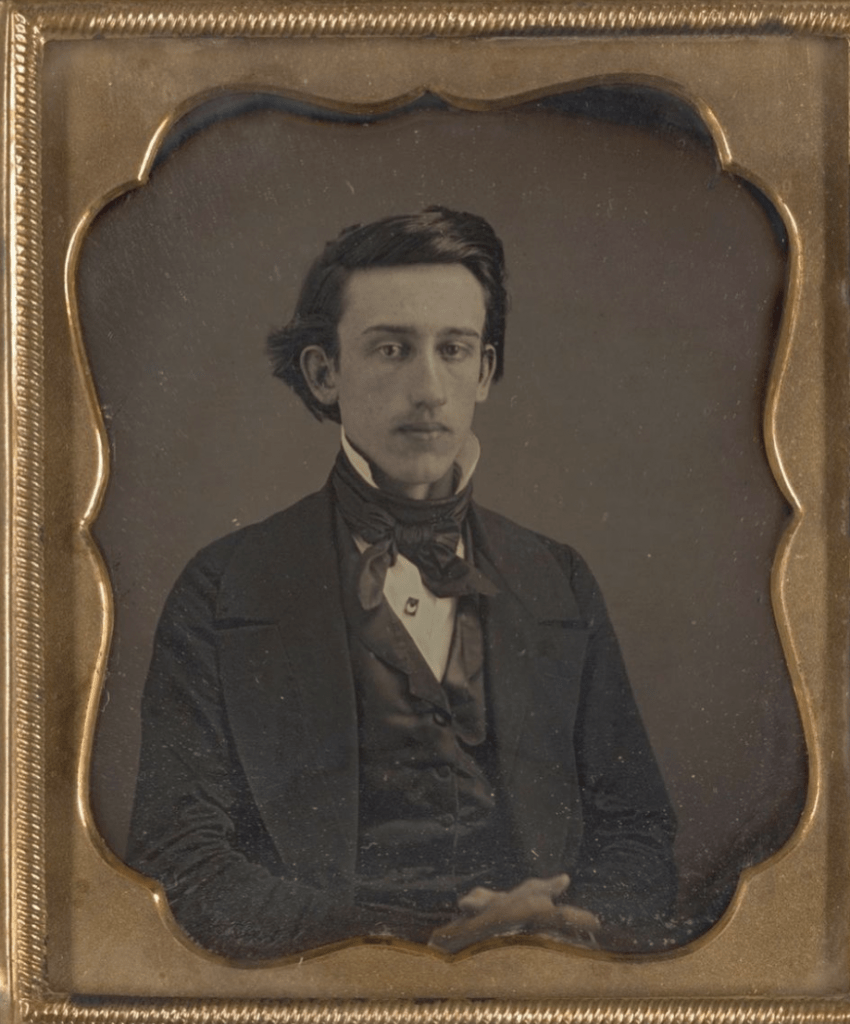
Portrayed in the AppleTV+ series Dickinson, George Gould might be best known for his possible romantic connection with Emily Dickinson. Gould, a towering 6’8″ and from an impoverished background in rural Worcester County, was considered one of the most brilliant men of Amherst’s class of 1850 – and was a close friend of Emily Dickinson’s brother Austin. In February 1850, Gould invited Emily to a candy pulling, a common social event for young folks. It is unclear if Emily accepted the invitation. But she did keep the note for the rest of her life, composing the poem “I suppose the time will come” on the verso. The first instance of Dickinson in print was a valentine most likely intended for Gould.
See the interview transcript with Alena Smith | Read more about the George Gould daguerrotype
See the candy pulling note from George Gould to Emily Dickinson
Ho Tiang Liang

Ho Tiang Liang was born near Canton, China, in March 1860. He was educated at Phillips Andover Academy before attending Amherst College as part of the Chinese educational mission, a program designed to educate young Chinese students in the United States. When the program ended in 1881 as a result of political and social pressures, Ho had only finished his sophomore year at Amherst. He returned to China, where he completed his studies in medicine and served as a surgeon during the Sino-French War.
Learn about the Class Albums collection
Orra White Hitchcock
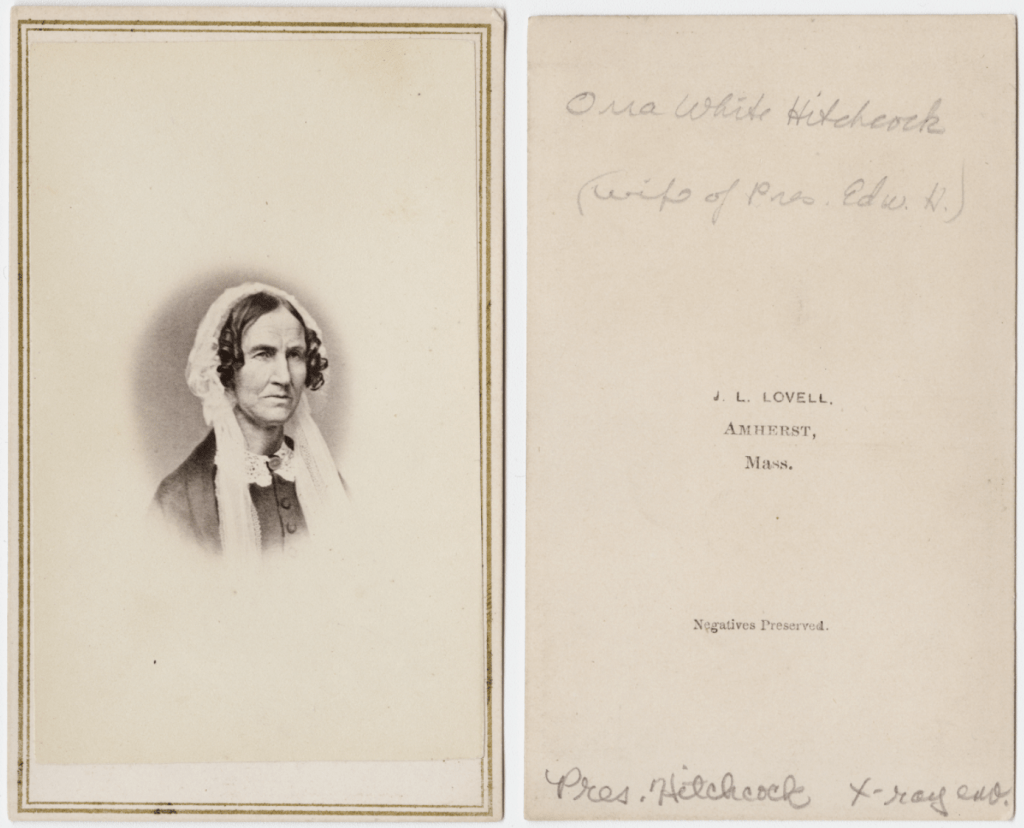
Orra White, born March 8, 1796 in South Amherst, began teaching mathematics, astronomy, botany, and the decorative arts to young girls at Deerfield Academy when she was only 17 years old. While at Deerfield, Orra met the naturalist Edward Hitchcock. With Orra lending her hand to illustrate an herbarium, the two began a lifetime collaboration joining science and art. In 1821 they married, and Hitchcock would become the third President of Amherst College and state geologist of Massachusetts. Orra provided scientific illustrations for Edward’s geological publications, with much of her work appearing in

Hitchcock’s 1833 and 1841 reports on the Geology of Massachusetts. Edward Hitchcock held the position of professor of Chemistry and Natural History at Amherst College from 1825-1845. During this time, Orra painted over 60 large format charts on linen depicting geological formations and prehistoric skeletons for Hitchcock’s classroom lectures. These charts allow us a look at how science was taught at Amherst in the mid 19th Century, as well as a glimpse of the geological landscape of the Pioneer Valley during her time as an artist.
View the Orra White Hitchcock Classroom Drawings online | View the Edward & Orra White Hitchcock Papers online
Sonia Sanchez

Poet, activist, and scholar Sonia Sanchez was the first African-American woman to join the faculty at Amherst College. One of the leading figures of the Black Arts Movement, Professor Sanchez received her undergraduate degree from Hunter College and pursued post-graduate studies at New York University. She arrived at Amherst as a visiting assistant professor in 1972 and left for a position at Temple University in 1975. The Afro-American Society (precursor to the Black Students’ Union) organized a high-profile day of celebration for Professor Sanchez in the spring of 1975.
View the College Photographer Records online | Sonia Sanchez speaking at Amherst in 2018
Lucia Butts
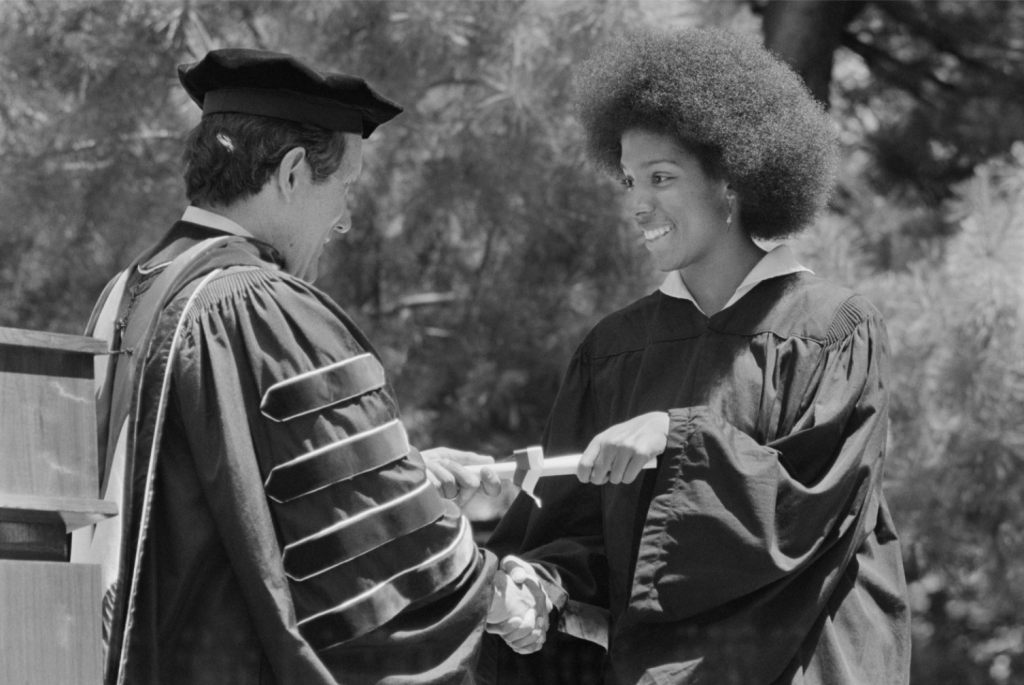
Lucia Butts was the first Black female graduate of Amherst College, majoring in music and receiving her diploma with the class of 1977. Using the name Lucia Vincent, she moved to Los Angeles to pursue a career in film. It was under this same name that Butts published the 2001 book Sexual Lynching, a fictionalized account of her experiences with sexual harassment during the 1980s and 1990s.
View the 1977 Amherst College Olio | Explore Amherst College Olios online
